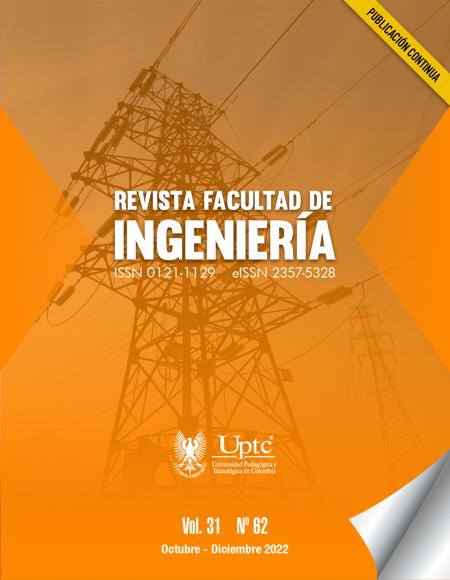Wear Behavior of Bioactive Glass Coatings Deposited by Thermal Spraying

Abstract
In this work, bioactive glass coatings were fabricated by plasma thermal spraying and oxyacetylene flame techniques from 2 different bioactive glass powders with 0 and 2% molar MgO. The metal substrates used were Ti6Al4V alloy and AISI 316L steel. The tribological behavior of the coatings was evaluated by the ball-on-disc method in the presence of simulated biological fluid (SBF), and the results were correlated with their mechanical behavior, obtaining values of hardness (between 4.84 and 5.18 GPa) and fracture toughness (between 5.25 and 6.62 MPa.m1/2). The results show that fracture toughness has a slightly higher effect than hardness on the wear behavior of the coatings under study.
Keywords
Thin films, ceramics, plasma thermal projection, thermal projection by flame
Author Biography
Mónica-Johanna Monsalve-Arias
Rooles: Investigation, Formal analysis, Methodology, Writing-original draft, Writing-review and editing.
Oscar-Fabián Higuera-Cobos
Roles: Investigation, Formal analysis, Methodology, Writing-original draft, Writing-review and editing.
Helèn Ageorges
Roles: Supervision, Methodology, Validation.
Fabio Vargas-Galvis
Roles: Supervision, Methodology, Validation.
María-Esperanza López-Gómez
Roles: Supervision, Methodology, Validation.
References
- M. Amaral, C. S. Abreu, F. J. Oliveira, J. R. Gomes, R. F. Silva, “Biotribological performance of NCD coated Si3N4–bioglass composites,” Diamond and Related Materials, vol. 16, no. 4, pp. 790-795, 2007. https://doi.org/10.1016/j.diamond.2006.12.045 DOI: https://doi.org/10.1016/j.diamond.2006.12.045
- L. Hench, J. Pantano, P. Buscemi, D. Greenspan, “Analysis of bioglass fixation of hip prostheses,” Journal of Biomedical Materials Research, vol. 11, no. 2, pp. 267-282, 1977. DOI: https://doi.org/10.1002/jbm.820110211
- L. G. de Oliveira et al., “Bioglass Ti coatings: Influence of thermal annealing on the evolution of calcium phosphate formation, phase and morphology,” Journal of Non-Crystalline Solids, vol. 567, e120926, 2021. https://doi.org/10.1016/j.jnoncrysol.2021.120926 DOI: https://doi.org/10.1016/j.jnoncrysol.2021.120926
- S. Bano, I. Ahmed, D. M. Grant, A. Nommeots-Nomm, T. Hussain, “Effect of processing on microstructure, mechanical properties and dissolution behaviour in SBF of Bioglass (45S5) coatings deposited by Suspension High Velocity Oxy Fuel (SHVOF) thermal spray,” Surface and Coatings Technology, vol. 372, pp. 229-238, 2019. https://doi.org/10.1016/j.surfcoat.2019.05.038 DOI: https://doi.org/10.1016/j.surfcoat.2019.05.038
- J. Henao, C. Poblano-Salas, M. Monsalve, J. Corona-Castuera, O. Barceinas-Sanchez, “Bio-active glass coatings manufactured by thermal spray: a status report,” Journal of Materials Research and Technology, vol. 8, no. 5, pp. 4965-4984, 2019. https://doi.org/10.1016/j.jmrt.2019.07.011 DOI: https://doi.org/10.1016/j.jmrt.2019.07.011
- Z. Li, N. W. Khun, X.-Z. Tang, E. Liu, K. A. Khor, “Mechanical, tribological and biological properties of novel 45S5 Bioglass® composites reinforced with in situ reduced graphene oxide,” Journal of the Mechanical Behavior of Biomedical Materials, vol. 65, pp. 77-89, 2017. https://doi.org/10.1016/j.jmbbm.2016.08.007 DOI: https://doi.org/10.1016/j.jmbbm.2016.08.007
- M. Latorre, Recubrimientos biocompatibles obtenidos por proyección térmica y estudio in vitro de la función osteoblástica, Master Thesis, Universitat de Barcelona, Barcelona, 2007.
- J. Cai, C. Miyata, X. Huang, Q. Yang, “Microstructure, bioactivity and wear resistance of sintered composite Co-Cr-Mo/Bioglass® for medical implant applications,” International Journal of Surface Science and Engineering, vol. 8, no. 2-3, pp. 264-281, 2014. DOI: https://doi.org/10.1504/IJSURFSE.2014.060500
- Y. Chen, X. Wang, L. Xu, Z. Liu, K. D. Woo, “Tribological behavior study on Ti–Nb–Sn/hydroxyapatite composites in simulated body fluid solution,” Journal of the Mechanical Behavior of Biomedical Materials, vol. 10, pp. 97-107, 2012. https://doi.org/10.1016/j.jmbbm.2012.02.017 DOI: https://doi.org/10.1016/j.jmbbm.2012.02.017
- E04 Committee, Guide for Metallographic Preparation of Thermal Sprayed Coatings, ASTM International, 2014. https://doi.org/10.1520/E1920-03R14 DOI: https://doi.org/10.1520/E1920-03R14
- E04 Committee, Test Methods for Determining Area Percentage Porosity in Thermal Sprayed Coatings, ASTM International, 2014. https://doi.org/10.1520/E2109-01R14 DOI: https://doi.org/10.1520/E2109-01R14
- C28 Committee, Test Method for Vickers Indentation Hardness of Advanced Ceramics, ASTM International, 2019. https://doi.org/10.1520/C1327-15R19 DOI: https://doi.org/10.1520/C1327-15R19
- F. Sergejev, M. Antonov, “Comparative study on indentation fracture toughness measurements of cemented carbides,” Proceedings of the Estonian Academy of Sciences and Engineering, vol. 12, no. 4, pp. 388-398, 2006. https://doi.org/10.3176/eng.2006.4.07 DOI: https://doi.org/10.3176/eng.2006.4.07
- T. Kokubo, H. Takadama, “How useful is SBF in predicting in vivo bone bioactivity?,” Biomaterials, vol. 27, no. 15, pp. 2907-2915, 2006. https://doi.org/10.1016/j.biomaterials.2006.01.017 DOI: https://doi.org/10.1016/j.biomaterials.2006.01.017
- F. Vargas, Elaboration des couches ceramiques epaisses a structures micrometriques et nanometriques par projection thermiques pour des applications tribologiques, Doctoral Thesis, Université de Limoges, Limoges, Francia, 2010.
- C. Cano Valencia, Recubrimientos cerámicos con aplicación en barreras térmicas y ambientales, Doctoral Thesis, Universidad Autónoma de Madrid, Madrid, 2008.
- J. Park, A. Ozturk, “Effect of TiO2 addition on the crystallization and tribological properties of MgO–CaO–SiO2–P2O5–F glasses,” Thermochimica Acta, vol. 470, no. 1, pp. 60-66, 2008. https://doi.org/10.1016/j.tca.2008.01.018 DOI: https://doi.org/10.1016/j.tca.2008.01.018
- D. Franco, H. Ageorges, E. López, F. Vargas, “Tribological performance at high temperatures of alumina coatings applied by plasma spraying process onto a refractory material,” Surface and Coatings Technology, vol. 371, pp. 276-286, 2019. https://doi.org/10.1016/j.surfcoat.2019.04.058 DOI: https://doi.org/10.1016/j.surfcoat.2019.04.058
- T. E. Fischer, Z. Zhu, H. Kim, D. S. Shin, “Genesis and role of wear debris in sliding wear of ceramics,” Wear, vol. 245, no. 1, pp. 53-60, 2000. https://doi.org/10.1016/S0043-1648(00)00465-8 DOI: https://doi.org/10.1016/S0043-1648(00)00465-8
- G. W. Stachowiak, A. W. Batchelor, “Wear of Non-Metallic Materials,” in Tribology Series, vol. 24, pp. 715-771, 1993. https://doi.org/10.1016/S0167-8922(08)70590-X DOI: https://doi.org/10.1016/S0167-8922(08)70590-X
- A. Kumar, K. Biswas, B. Basu, “Fretting wear behaviour of hydroxyapatite–titanium composites in simulated body fluid, supplemented with 5 g l-1 bovine serum albumin,” Journal of Physics D: Applied Physics, vol. 46, no. 40, e404004, 2013. https://doi.org/10.1088/0022-3727/46/40/404004 DOI: https://doi.org/10.1088/0022-3727/46/40/404004
- J. Park, A. Ozturk, “Tribological properties of MgO–CaO–SiO2–P2O5–F-based glass-ceramic for dental applications,” Materials Letters, vol. 61, no. 8, pp. 1916-1921, 2007. https://doi.org/10.1016/j.matlet.2006.07.155 DOI: https://doi.org/10.1016/j.matlet.2006.07.155